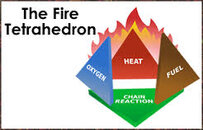I would be interested to hear if there were any reported incidents of exploding cylinders with 50% O2. I remember hearing about 40% being the general limit for non-O2 cleaned cylinders and regulators but I guess my question was more related to the hazard of a cylinder igniting if dropped or say if I had cylinders in the trunk of a car and I'm rear-ended. I heard some stories of a man who worked at a fill shop and would smoke a cigarette and wave around the O2 hose just to make everybody go berserk! Of course, as NorCalDM said, Oxygen is not flammable itself, it is only an oxidizer. But then of course there was the incident over at Renakers shop, cave excursions in florida, where the lady dropped the pure O2 cylinder on its valve and it went off like a grenade. For these reasons I usually keep any mixes with higher than 40% O2 in the back seat, not the trunk just as a precaution. If anyone knows of incidents with explosion of cylinders containing less than pure oxygen, I would be interested to hear them.
Thanks for the replies!
Thanks for the replies!






